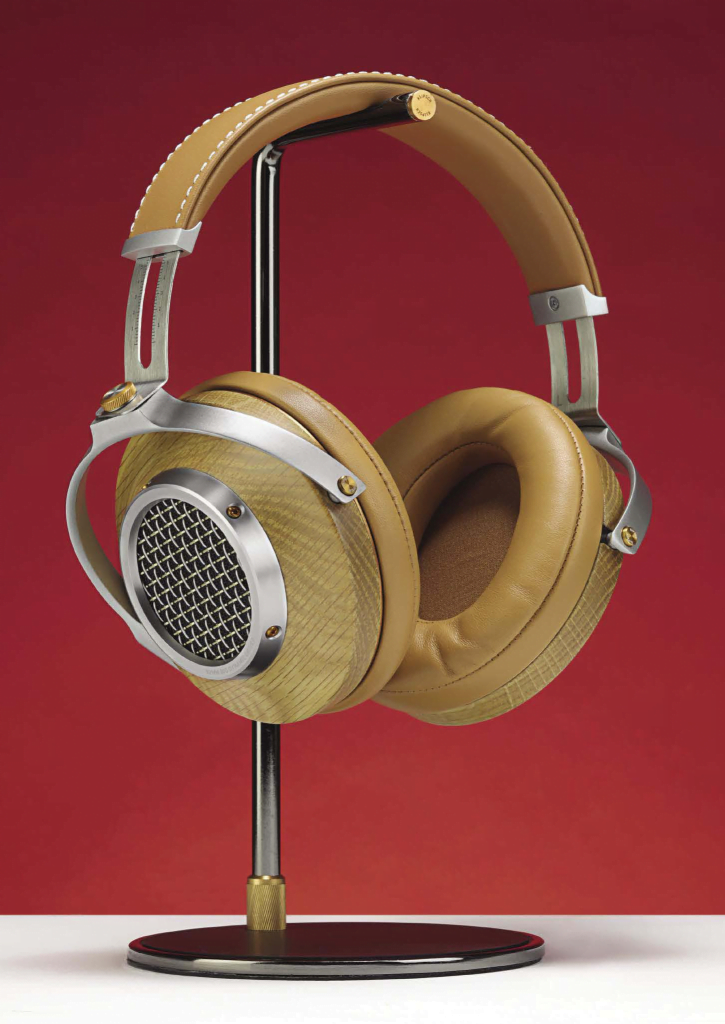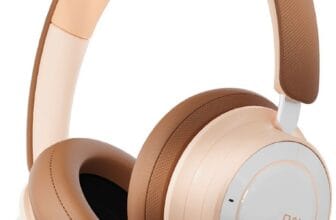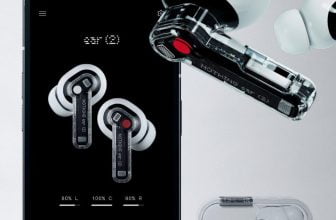KLIPSCH HP-3 Review – Sonic Inheritance
Klipsch invoke heritage with their new HP-3 headphones. Noel Keywood listens. Read our KLIPSCH HP-3 Review.
Klipsch (USA) are a pushy company product wise, delivering in new products at low prices that challenge most else – as I found with The Fives active loudspeakers reviewed in our October 2020 issue. In contrast, here’s a new high-end headphone from them – at no low-end price – instead a massive £. Gulp. The Heritage HP-3 is a statement product.
To make a visual statement on the street you need distinctive finish – and the HP-3s have plenty of that. The ear cups are fashioned from wood Klipsch say, but have a strangely smooth external finish that, under a magnifying glass, is free of grain and artificially patterned, looking and feeling to me like artificial veneer. Looks good at a distance, unconvincing close up.There are three available finishes: Ebony Walnut and Oak.
The ear pads are made from soft leather and held in place by magnets – a novel approach.The headband is leather covered and the slide extensions at either side even have an engraved scale so any setting can be returned to, which I suppose is handy if they are shared between people of different head size.The scale was peculiar though, being marked in millimetres – unusual for a U.S. product unless ours were an export version. Five divisions (mm) were marked as I, 10 divisions as 2, etc. – an odd way to calibrate; I suspect Klipsch feel 5mm is a suitable step distance and there are 6 steps, so 30mm movement in all.
Each earpiece has its own electrical input – a 3.5mm mono jack socket at the end of the machined alloy earpiece cradle. The significance of this is the‘phones can be run in balanced mode where they don’t share an earth line. However, as standard they come with cables terminated in 3.5mm stereo jack plugs that give unbalanced working – and that’s how I reviewed our samples. An 1/4in (6.3mm) adaptor is supplied. Klipsch picture a dedicated headphone amplifier with balanced output on their website, but a balanced cable is then needed which doubtless they supply. But I have run plenty of ‘phones fully balanced and it offers little improvement; the unbalanced part of the short cable (1.37m long) is only 90cms after all. A 2.5m long cable is also supplied.
The drive units use “a proprietary mixture of biocellulose and inorganic fibre” Klipsch say and with magnets of high flux density they are efficient. However, with an impedance of just 25 Ohms, where most ‘phones are either 300 Ohms or 40 Ohms (commonly used standards), the HP-3s will draw more current than most else and will be more suited to mains powered products than mobile ’phones but I used them with my iPhone to check compatibility.
The enclosure is open-backed behind the drive units, allowing sound to escape rearward.This gives lighter bass than enclosed ‘phones, but also less boomy sound; it’s my preference. Open backed phones do let sound escape though – not so good when commuting.These ‘phones are better off at home, where I found their 440gm weight acceptable, if not lightweight.

The HP-3s come extravagantly packaged in a large real wood case with sliding draws.The packaging exceeded the headphones in size and weight by large margin, coming in at 4.8kgs no less. I felt the packaging was excessive, both in space consumed at home and in amount of waste generated when discarded. Not sensitively packaged; much better could be done here. A headphone stand is supplied.
SOUND QUALITY
Initially, I drove the HP-3s from an Audiolab M-DAC+ hooked up to a recent MacMini (Mojave OS) running Audirvana to read a stored music library as well as a Chord Electronics Dave DAC, with its massive dynamic range.
To kick off, the HP-3s have an even and natural tonal balance, being neither excessively bright nor bass heavy. Also, they have none of the cuppiness of closed-back phones, as you might hope since they are open-backs – and this does give them an airy sound.
Whilst not being bass heavy the HP-3s were nevertheless bass strong.The pounding synth kick-drum in Safri Duo’s Samb Adagio (CD) had enormous strength, making its presence dominant in the mix. It was tight and controlled too.
Opening bodrans in Sinead O’Connor’s The Foggy Dew pounded out strongly and I caught every word as she sang, pipes trilling clearly around her.There was some slight hardness to her vocals at times, brought out by a smidgeon of upper midrange glare I fancy.Which is to say the HP-3s are strong up top, which helps toward their clarity, but they’re not overly bright.
With some tracks, such as The Pink Panther Theme (CD) both I and my son (who’s inevitably a headphone expert!) noticed a spikiness to cymbals I’ve not heard before, but this was not obvious on other tracks. Nil’s Lofgren’s Keith Don’t Go is packed with fast transients from closely miked guitar strings and this slid by sounding impressive. So with CD a vivid sound with superb clarity and great balance, but treble just a tad ‘obvious’ – sufficient to draw comment
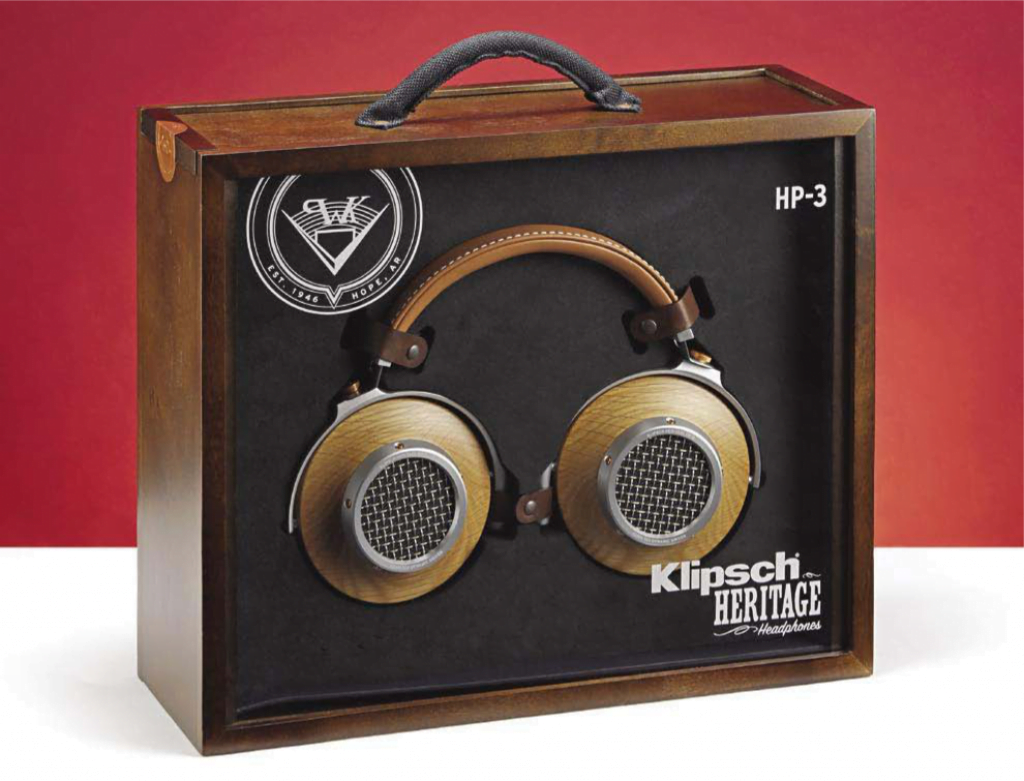
It took a move to DSD to show how revealing these ‘phones really are. Haydn’s Concerto for Horn No l had strings well lit and sheenily clear, whilst the horn jumped at me sounding full bodied and rich, pulled strongly from the background.The smoothness of DSD suited these revealing ‘phones and they paid back the compliment by showing how good DSD is compared to CD.
Brahms Piano Pieces (Klavierstucke) Op118 slid by sounding lovely, with strong, well outlined key strikes making piano sound vividly clear. Perhaps some slight hardness of tone – but arguable! The HP-3s certainly analyse such performances and their forensic qualities were better suited to DSD than PCM I came to feel.
With Cyndee Peter’s House of the Rising Sun (DSDI28) there was stark clarity – but again I was made aware of every ringing cymbal tap. I got to hear it all, there’s no doubt.
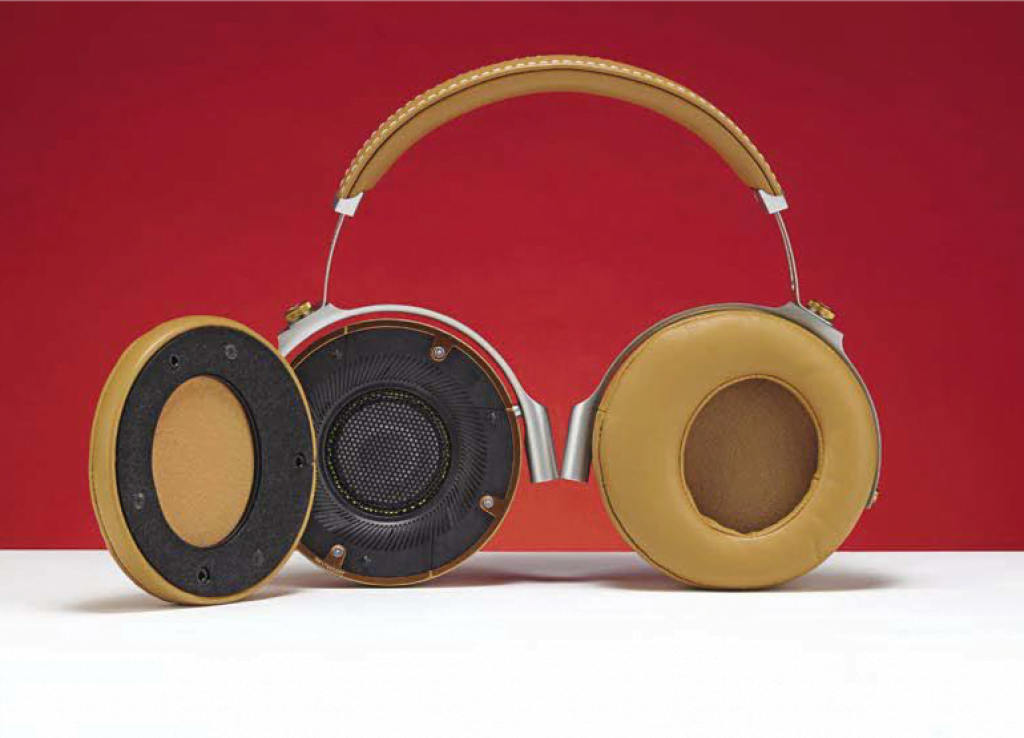
Pink Floyd’s Money (DSD64) was almost frightening in its stark clarity the drifting sax punching its way into my ears and as tempo increased (as it does in this track) the HP-3s captured every nuance of the soaring guitar work, with deep insight and cutting speed.They conveyed the dynamic excitement of Money better than I have heard over the years – by large measure.Almost frighteningly revealing.
CONCLUSION
The Klipsch HP-3 headphones exceeded my expectations.They are many steps up in terms of clarity and revelation than most others.With powerful bass of superb quality that did not overwhelm, a revealing midband and plentiful high treble. Excessive packaging and poor veneer finish are minus points to the whole offer, but as sound quality goes, amongst the best.
